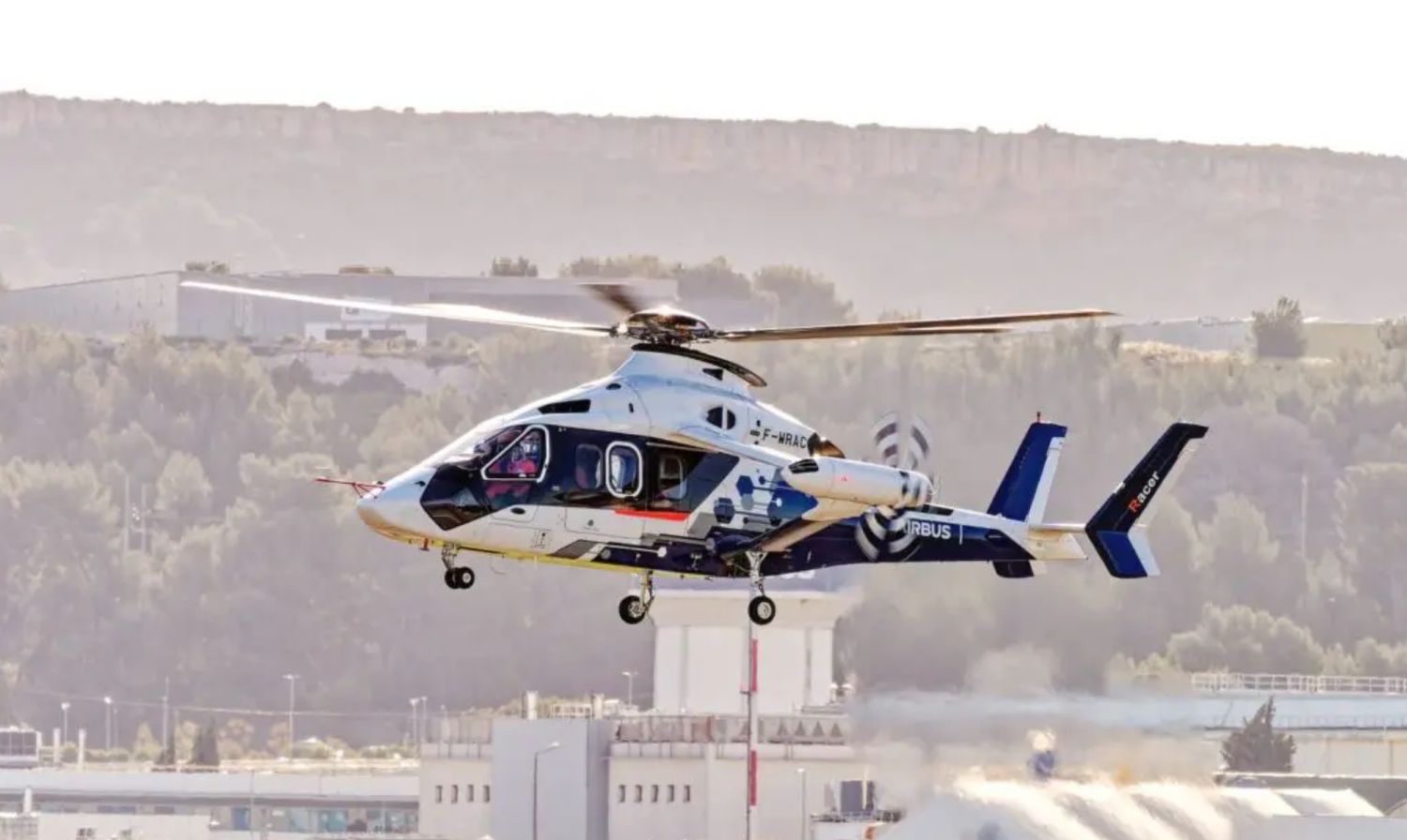Racer, Airbus’ high-speed helicopter demonstrator, developed under the European Clean Sky 2 research project, has achieved its fast cruise speed target of 407 km/h (220 kts). On June 21, less than two months after its first flight, the Racer exceeded its speed target of 407 km/h (220 kts) by reaching 420 km/h (227 kts) in its initial configuration. In just seven flights and around nine hours of flight testing, nearly the entire flight envelope was opened.
“This achievement in such a short time is truly a testament to the hard work of our 40 partners in 13 European countries in bringing all this innovation to flight. Beyond its performance, the aircraft’s aerodynamic behavior and stability are promising. We are all looking forward to the next phase of flight tests, especially the eco mode, which will allow us to shut down one engine in forward flight, thereby reducing fuel consumption and CO2 emissions,” said Bruno Even, CEO of Airbus Helicopters.
The flight test team consisted of Hervé Jammayrac, Chief Test Pilot, Dominique Fournier, Flight Test Engineer, and Christophe Skorlic, Flight Test Engineer. The next phase of flight tests will focus on single-engine operations and the completion of the flight envelope.
Optimized for a cruise speed of over 400 km/h, the Racer demonstrator aims to achieve the best balance between speed, cost-efficiency, and mission performance. The Racer also aims for a fuel consumption reduction of around 20% compared to current generation helicopters in the same maximum takeoff weight category, thanks to aerodynamic optimization and an innovative eco-mode propulsion system.
The key to the Racer is not top speed but efficiently performing real missions at high speeds, with efficiency defined as the perfect combination of fuel consumption, emissions, and performance. I had the chance to see it while it was still being assembled at the Marignane plant earlier this year.
Developed with Safran Helicopter Engines, the hybrid-electric eco-mode system allows pausing one of the two Aneto-1X engines while in cruise flight, thus helping to reduce CO2 emissions. The Racer also aims to demonstrate how its unique architecture can help reduce its operational acoustic footprint.


Comentarios
Para comentar, debés estar registrado
Por favor, iniciá sesión